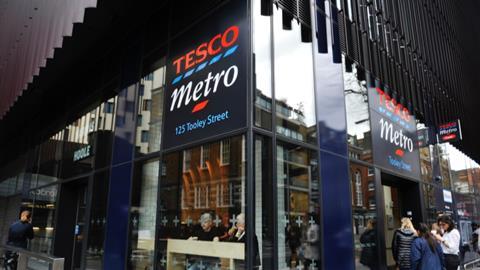Yesterday Tesco announced plans to cut 4,500 jobs, primarily at its 153 Metro stores.
This is desperately sad news – especially as it follows the closure of many serve-over counters in recent months, a move likely to affect 9,000 jobs.
Tesco says the latest round of cuts “will allow us to serve shoppers better and to run our business more sustainably, in an increasingly competitive and challenging retail environment”.
There is no doubt these are turbulent times for retail. And this latest blow shows that even strong retailers are not immune to the woes that have crippled so many high street retailers.
What’s more, shoppers are no longer using Metro stores in the way they were originally designed. Tesco says 70% of Metro shoppers are using them like convenience stores, topping up on food to be eaten that day rather than carrying out a full weekly shop. This is a trend that has been growing for years and will be true of many grocery superstores, never mind just this smaller format.
The element of Tesco’s rationale that is harder to swallow is that the cuts will help it “serve customers better”. How could such a dramatic headcount change, which at a rough calculation could leave around 25 members of staff per store, possibly improve the lot of the customer?
Exact details are scarce right now. Tesco says it is implementing faster and simpler ways of filling shelves, with fewer products stored in back rooms and more stock going straight to the shop floor. Staff will work more flexibly across the store to improve customer service at the busiest times of the day, and in the right areas of the store, while it is also introducing a leaner management structure.
The point for me is that in introducing these changes, Tesco will have to work both extremely hard and smart to ensure the customer experience is maintained, never mind improved. Keeping up morale for remaining staff will be a challenge, and by trimming management roles there is also a serious risk that stores lose valuable experience and knowledge.
A further concern will be with switching to a faster replenishment system. Taking stock directly from the delivery truck to the shelf rather than the store room requires a lot of processes to run smoothly – forecasting, ordering, deliveries arriving on time and having the right staff available to unload trolleys and stock shelves – otherwise the risk is empty shelves and trolleys simply wheeled out onto the shop floor and abandoned.
So naturally, my thoughts are with the staff set to lose their jobs. In the current climate this is a massive blow – but there’s also a thought for those staff that remain and who will be charged with implementing these changes and improving the customer experience with fewer hands on deck.




















No comments yet